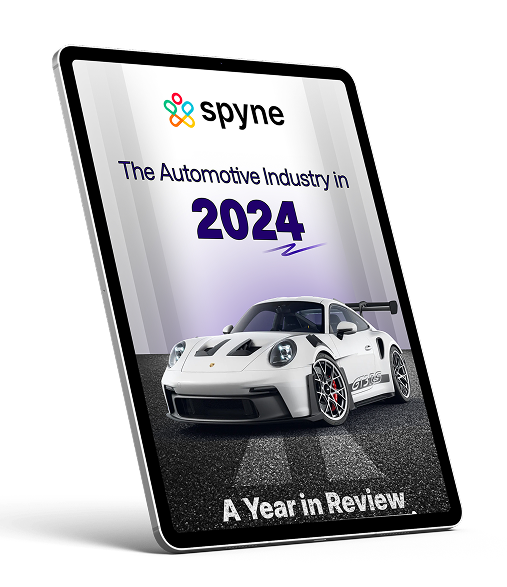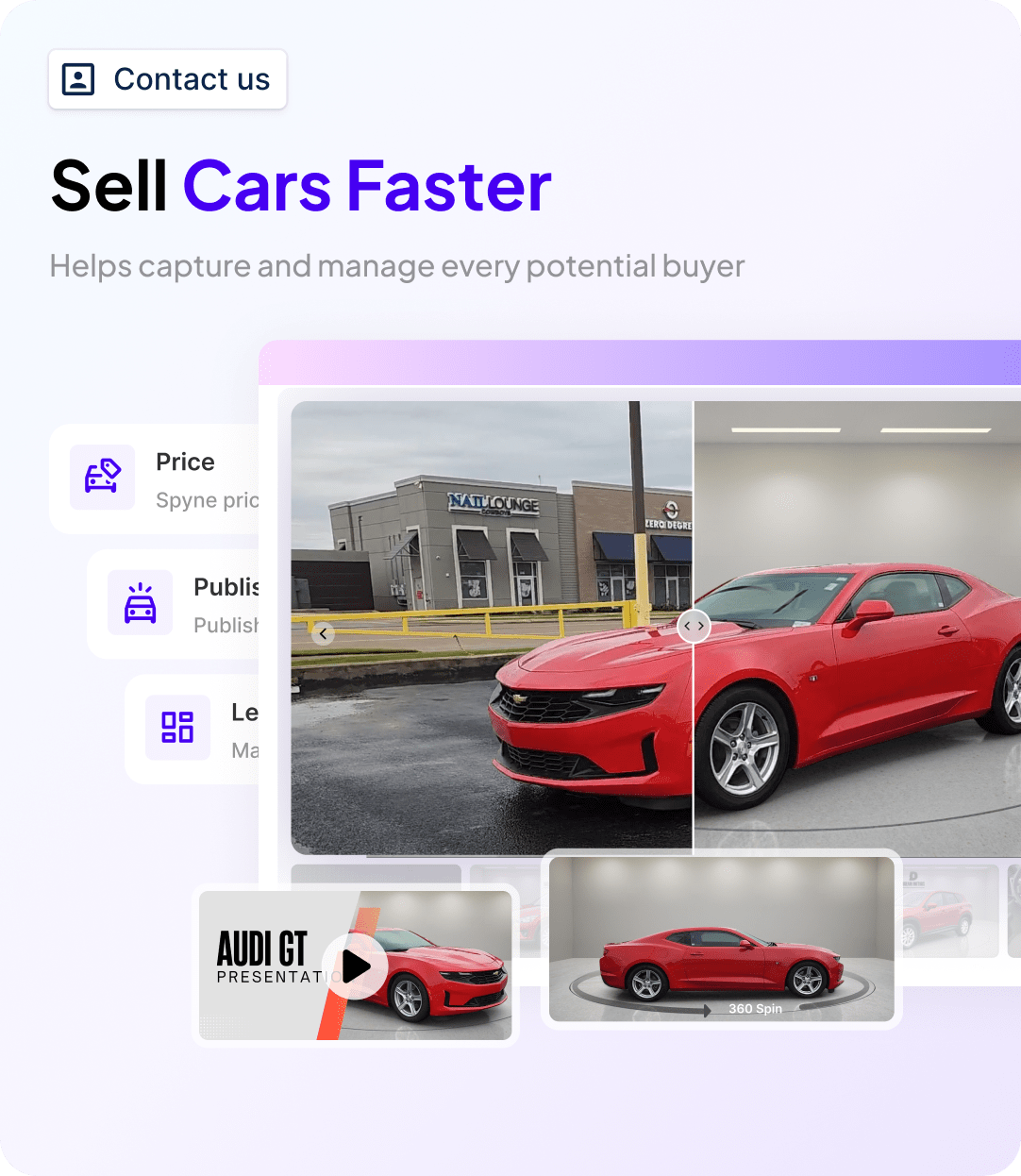When you think of a used car, what comes to mind? Maybe a slightly worn vehicle, a few dings on the body, or a faded interior? Not anymore. Today, many used cars look and sometimes feel as good as new. This change is the result of a process called vehicle reconditioning which is an important step that every serious dealership or auto seller invests in. Car Reconditioning is a complete refresh, both inside and out, that gets a car ready for resale, making it mechanically sound, visually appealing, and showroom ready. Without it, even the best deals would have a hard time finding a new owner.
In this in-depth guide, we’ll walk you through everything you need to know about vehicle reconditioning, why vehicle restoration is important, the true cost of car recon, and why learning used vehicle reconditioning process can make all the difference between a slow seller and a quick profit.
What is Car Reconditioning?
Car Reconditioning is the process of repairing, restoring, and preparing a used vehicle to improve its mechanical condition, appearance, and overall value, making it as close to new as possible before resale.
It involves far more than simple cleaning or detailing. True auto reconditioning covers:
- Mechanical repairs like car engine reconditioning
- Cosmetic touch-ups like car paint reconditioning
- Full car interior reconditioning including seat repairs, odor removal, and deep cleaning
- Electrical fixes, windshield repairs, and minor bodywork
- Vehicle inspection and vehicle assessment to ensure roadworthiness
- High-quality imagery and digital prep like car exterior photography, car interior photography, 360 spin, and virtual tour creation
In short, car reconditioning service makes sure that a buyer not only falls in love with the car at first sight but can also trust that it will run reliably after they drive it off the lot. And today, with so much competition online and buyers increasingly relying on virtual showrooms, having reconditioned cars displayed through polished listings with 360 car virtual tours is non-negotiable.
Why is Vehicle Restoration Important?
As we all know, first impressions are everything. A scratched, dirty, or mechanically unreliable car might not sell at all.
Here’s why vehicle reconditioning is important:
- Trust and Value: A well-presented car builds trust with buyers. If it looks good, buyers assume it’s been cared for.
- Faster Sales: Reconditioned vehicles move off the lot quicker than those needing work.
- Higher Prices: A clean, mechanically-sound car commands a higher resale value.
- Better Online Listings: Thanks to tools like 360 spin, car interior photography, and 360 car exterior shots, a well-reconditioned car stands out in virtual showrooms.
- Passing Inspections: Cars must often pass a final vehicle inspection or vehicle assessment to be sold and reconditioning ensures they do.
Without reconditioning, dealerships risk losing sales, damaging their reputation, and carrying inventory that costs them money the longer it sits.
What’s Included in Auto Reconditioning?
The auto reconditioning process is multi-step and thorough. It usually includes:
1. Mechanical Repairs
- Engine checks, car engine reconditioning if needed
- Brake repair
- Suspension fixes
- Battery and fluid checks
2. Cosmetic Repairs
- Fixing dents, scratches, and chipped paint (car paint reconditioning)
- Repairing or replacing damaged bumpers, mirrors, lights, and trim
3. Interior Repairs
- Deep cleaning carpets, seats, and dash (car interior reconditioning)
- Fixing upholstery tears, broken buttons, or damaged panels
- Odor removal treatments
4. Detailing
- Vehicle Reconditioning detailing includes polishing the body, cleaning wheels, applying wax or ceramic coatings
5. Photography and Virtual Tour Preparation
- High-quality car interior photography and car exterior shots
- Creating car 360 spin visuals for online listings to offer customers a full virtual tour of the car
Each of these steps helps increase the perceived value of the car and buyers will pay for that extra polish, even if they don’t realize it consciously.
Automotive Reconditioning vs. Auto Detailing: What’s the Difference?
It’s easy to confuse automotive reconditioning with auto detailing as they both make cars look better, after all.
But here’s the simple breakdown:
| Aspect | Auto Detailing | Automotive Reconditioning |
| Purpose | Cleaning and beautifying | Repairing and restoring |
| Work Included | Washing, polishing, vacuuming | Mechanical fixes, bodywork, painting |
| Goal | Improve appearance | Improve condition and value |
| Timing | After car recon | Before listing the car for sale |
How Much Does Reconditioning a Used Car Cost?
The cost of used car reconditioning can vary widely depending on the vehicle’s condition and what’s needed.
Here’s a rough idea:
- Minor cosmetic fixes + detailing: Approx $300–$600
- Moderate car recon (mechanical + cosmetic): Approx $800–$1,500
- Major car recon (engine work, major body repairs): $2,000+
Luxury vehicles or heavily damaged cars can cost even more to recondition. But, smart dealerships know that a $1,000 investment in a vehicle that can sell for $3,000 more is well worth it.
How Does Spyne Help with Vehicle Reconditioning?
1. AI-Enhanced Car Photography
Capturing high-quality images is a key part of car recon. Spyne’s AI-powered photography tools make it simple to take professional-grade photos.
- Interior Shots: Spyne helps you capture the interior in all its glory, showcasing the upholstery, dashboard, and seats after any car recon work.
- Exterior Shots: Spyne’s photography tools bring out the best in the exterior of the car, showing how well the vehicle has been reconditioned.
2. 360 Spin & Virtual Tours
One of Spyne’s standout features is its ability to create 360-degree spins and virtual tours of the car. These interactive tools let potential buyers view the car from every angle, giving them a full experience without even being there.
- More Engagement: Buyers can virtually walk around the car, giving them a better understanding of its condition and car recon work
- Faster Decisions: Virtual tours help speed up the buying process since buyers can inspect the car in detail, from the comfort of their home.
- Trust and Transparency: A 360 spin shows exactly what has been reconditioned, making buyers feel more confident about the vehicle’s quality.
3. Easy Condition Reports & Assessments
Spyne helps dealers by offering easy-to-create vehicle assessments. These reports detail the car recon work done on the car, such as any repairs, paint touch-ups, or interior cleaning. When paired with clear photos, these assessments provide transparency.
4. Better Online Listings
Spyne allows dealerships to create engaging online listings that accurately show the vehicle’s reconditioned state. This helps attract more buyers and can even increase sales by giving potential customers the information they need to make an informed decision quickly.
Car Recon and ROI for Used Car Dealers
Car recon service is about maximizing Return on Investment (ROI) as much as it’s about selling cars. Here’s how reconditioning helps dealerships:
- Faster Turnover: Reconditioned cars sell faster. Faster sales mean less money tied up in inventory.
- Higher Margins: A reconditioned vehicle can command higher prices.
- Better Customer Satisfaction: Buyers are happier and more likely to leave good reviews or recommend the dealership.
- Stronger Online Presence: Great-looking cars showcased through 360 spin imagery and virtual tours attract more online shoppers.
Many top dealerships today focus heavily on vehicle reconditioning best practices to stay ahead because when it comes to used cars, every day a car sits unsold is a hit to profits.
Vehicle Reconditioning Best Practices for Used Cars
To master the vehicle reconditioning process and maximize returns, dealers should follow best practices:
1. Immediate Vehicle Inspection and Assessment
When a used car enters inventory, perform a full vehicle inspection and car damage assessment immediately. This helps quickly identify what needs fixing and allows for faster turnaround.
2. Prioritize Safety and Function First
Fix mechanical and safety issues before addressing cosmetic flaws. A car that looks great but can’t pass a test drive will backfire.
Focus areas:
- Brakes
- Tires
- Steering
- Engine and transmission health
- Windshields and airbags
3. Use a Standardized Vehicle Reconditioning Checklist
Consistency is everything. Every car, regardless of its condition, should pass through a formal checklist to ensure nothing is missed, including everything from major mechanical issues to minor touch-ups.
Sample checklist might include:
- Engine status
- Transmission performance
- Paint condition
- Interior cleanliness
- Electrical system check
- Tire tread depth
- Brake pad thickness
4. Work with Trusted Partners
If outsourcing repairs or detailing, work only with trusted, reputable vehicle reconditioning services. Poor-quality work can damage your reputation and hurt margins.
5. Invest in High-Quality Digital Assets
After car recon, invest in professional car interior photography, car exterior photography, 360 spin, and virtual tour creation. High-quality visuals attract more online buyers and shorten selling times.
6. Keep Car Recon Time Tight
The longer a car is being reconditioned, the longer it’s not selling. So aim for a fast turnaround, ideally under 5–7 days from acquisition to listing.
7. Be Transparent with Buyers
Providing buyers with reconditioning reports builds massive trust. Highlight repairs made, parts replaced, and maintenance performed during the reconditioning process.
Conclusion
Car Reconditioning is not an optional part of selling used vehicles, it’s the foundation of the same. Everything from car engine reconditioning, car paint reconditioning to minor details matters in shaping a buyer’s decision.
Done right, vehicle reconditioning shortens selling time, improves margins, and creates happier customers. Plus, with the rise of digital tools like 360 spins, virtual tours, and professional car photography, presenting a reconditioned vehicle has never been more powerful.
If you’re a dealership, learning the used vehicle reconditioning process could be your biggest success formula. And if you’re a car buyer, you know exactly what goes on behind the scenes to make that “used” car feel almost brand new.














